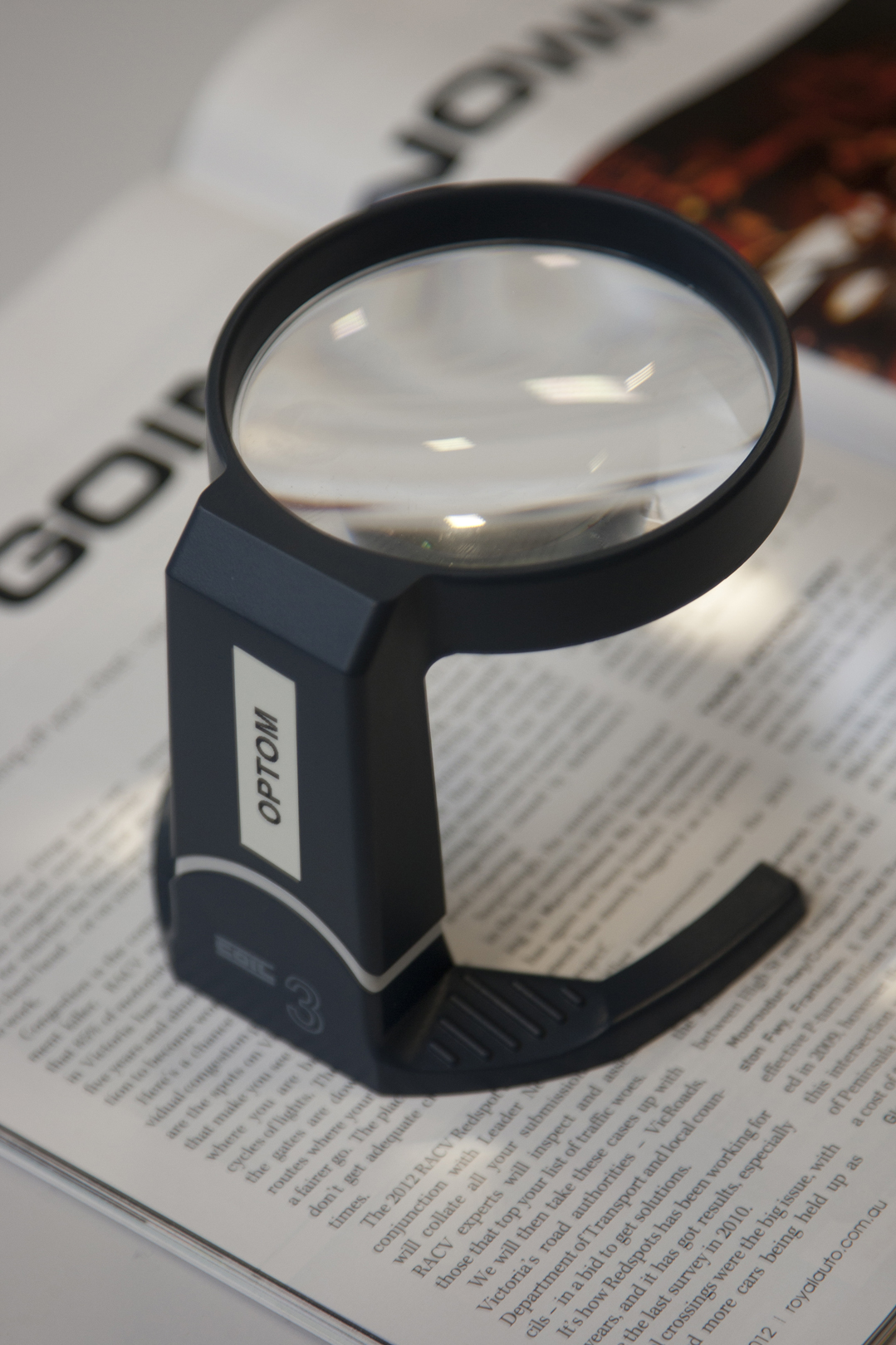Magnifiers are used to enlarge the size of images such as print or pictures. They are an essential part of the lives of many low-vision people. With that in mind, it is important that you choose the right magnifier for your individual needs. We have put together some information regarding magnifiers and how we can support you to find the best one for you, as well as breaking down the different types of magnifiers. If you are looking to purchase a magnifier you can find them in our online shop.
Choosing a magnifier

We can make sure your magnifier is the right fit for your needs by taking the following into consideration:
- your level of vision,
- the reading material you wish to access, anything from medication labels, to novels, to textbooks, and much more, can be read with ease with a magnifier.
- the environment in which you are reading
- any cognitive or physical limitations you might have
Most magnifiers for near or close up tasks are much stronger than reading glasses and they come in a variety of types and strengths.
It is important that you trial different types of magnifiers to work out which ones suit your needs. Many people have a range of different magnifiers for different reading/writing situations and other near tasks such as hand sewing.
At a Vision Australia low vision clinic, you can trial all the different types of magnifiers available and learn how to use the right one effectively. Find out more about our low vision clinics here.
Hand magnifier
Hand magnifiers are held in the hand and the user adjusts the height of the magnifier from the page until the print material is in focus.
Hand magnifiers are either illuminated (with inbuilt light source) or non-illuminated (without inbuilt light source).
Advantages
- portable
- easy to use
- have flexible working distances
- familiar
- inexpensive
Disadvantages
- require use of one hand
- require good hand control
- are generally only useful in lower magnifications.
Non-illuminated stand magnifiers
Stand magnifiers rest on the page and do not need to be focused.
Stand magnifiers can be non-illuminated (without inbuilt light source) or illuminated (with inbuilt light source).

Advantages
- available in higher magnification
- do not require good hand control as they rest on the page
- object is always in focus (so long as magnifier is sitting on the page)
Disadvantages
- fixed posture required (you may need to bring the page closer to your face to avoid hunching over the page)
- difficult to get close enough for good viewing
- need hard, flat and stable surface
- difficult to use for extended reading
Stand magnifiers - illuminated
Illuminated stand magnifiers can be powered by batteries or electricity. Magnifiers may have standard globes, halogen globes or LED (light-emitting diodes) globes. LED globes last a very long time, so do not require replacing, often for the life of the magnifier. They also use less battery power than the other globes.
The image below shows the enlargement of text through an illuminated stand magnifier

Advantages
- available in higher magnification than other magnifiers
- do not require good hand control as they rest on the page
- object is always in focus (so long as magnifier is sitting on the page)
Disadvantages
- fixed posture required (you may need to bring the page closer to your face to avoid hunching over the page)
- difficult to get close enough for good viewing
- need hard, flat and stable surface
- difficult to use for extended reading
The image below shows an illuminated stand magnifier being used with a clipboard.

Visulette and strip magnifiers
A visulette looks like a glass paper weight and is very simple to use.

A strip magnifier is like a stretched out visulette and is useful for moving down a page to systematically read test.

Visulettes and strip magnifiers have a set focal distance and sit on the page. These magnifiers are only available in low magnification.
Connect with our services
You can purchase a magnifier in our online shop.
If you are looking for support to find the right magnifier for you, you can connect with our services on 1300 84 74 66 or via email at info@visionaustralia.org










